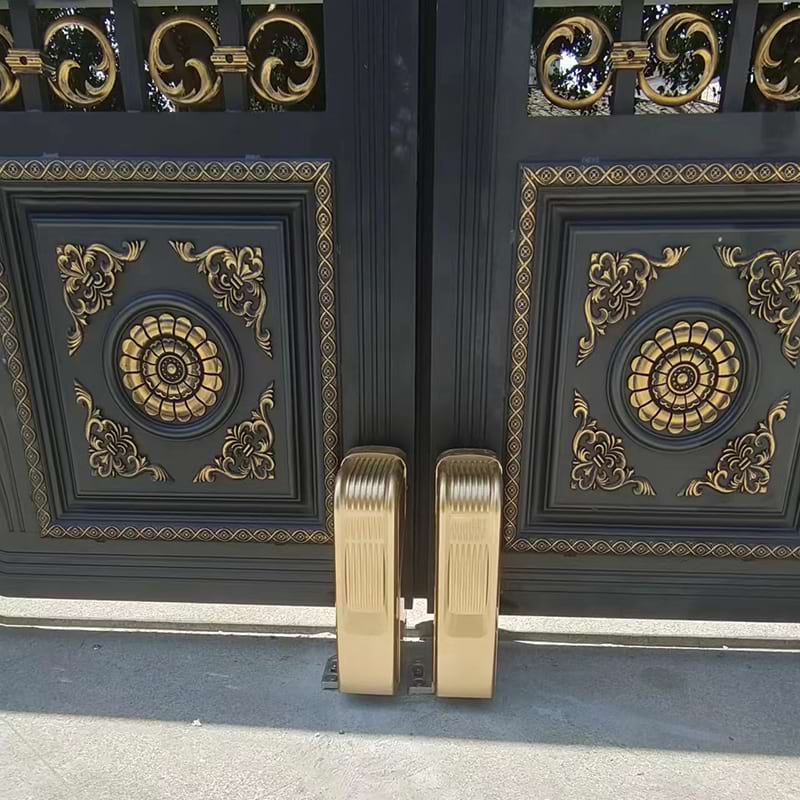Solar-powered gate openers are becoming increasingly popular as a sustainable and cost-effective solution for automating residential, commercial, and industrial gates. By leveraging renewable solar energy, these systems provide a convenient and environmentally friendly alternative to traditional electric gate openers. But how exactly do they work, and are they a practical choice? Let’s explore the components, functionality, benefits, challenges, and effectiveness of solar-powered gate openers.

Solar-powered gate openers operate by harnessing sunlight through photovoltaic (PV) panels to generate the electricity needed to power the system. Here's a breakdown of their key components and functionality:
Role: Solar panels collect sunlight and convert it into direct current (DC) electricity.
Placement: Installed in a location with optimal sun exposure, typically atop a pole or near the gate.
Output: The generated energy is used to charge the battery and operate the gate opener system.
Role: Stores the solar energy collected by the panels.
Functionality: Ensures the system operates even during cloudy days, nighttime, or extended periods of low sunlight.
Backup Power: Many systems include backup options for additional reliability.
Role: Acts as the brain of the system, managing the flow of electricity from the solar panels and battery to the gate motor.
Features: Includes programming options for opening and closing times, safety sensors, and remote control integration.
Role: Uses the stored energy to physically move the gate.
Types: Supports different gate styles, including sliding, swing, and barrier gates.
Role: Enhances safety and functionality by detecting obstacles and preventing accidents.
Additional Features: Often includes wireless remotes, keypads, and smartphone app integration for user convenience.
The effectiveness of solar-powered gate openers depends on several factors, including the quality of the system, environmental conditions, and specific use cases. Here’s an analysis of their advantages and potential limitations:
Environmentally Friendly
Solar-powered gate openers use renewable energy, reducing carbon emissions and dependence on non-renewable energy sources.
Cost-Effective Operation
After the initial installation, operational costs are minimal since the system uses free solar energy.
Eliminates the need for wiring to the main electrical grid, saving on installation costs.
Energy Independence
Ideal for remote locations where connecting to the power grid may be impractical or expensive.
Reliable Backup Power
Systems with high-capacity batteries ensure reliable operation even during power outages or inclement weather.
Low Maintenance
Solar panels require minimal upkeep, typically just periodic cleaning to ensure maximum efficiency.
Versatility
Suitable for various gate types, including swing, sliding, and vertical pivot gates.
Dependency on Sunlight
Performance may be affected in regions with limited sunlight or prolonged cloudy weather.
Requires proper placement of solar panels to maximize sun exposure.
Initial Costs
Higher upfront costs due to the need for solar panels, batteries, and specialized components.
Power Limitations
May not be suitable for heavy-duty gates requiring significant power, especially in high-traffic applications.
Battery Lifespan
Batteries typically need replacement every 3-5 years, adding to long-term maintenance costs.
Installation Challenges
Requires careful placement and angling of solar panels for optimal performance, which may not be feasible in all locations.
Solar-powered gate openers are highly versatile and can be used in various settings:
Residential Gates: Ideal for homes with light to moderate gate usage.
Rural Properties: Perfect for farms or remote locations without easy access to grid power.
Commercial and Industrial Gates: Effective for low-to-moderate traffic gates with lightweight designs.
Eco-Friendly Projects: Aligns with sustainability initiatives for green building designs.
To maximize the effectiveness of a solar-powered gate opener, consider the following factors:
Solar Panel Placement: Ensure panels receive maximum sunlight exposure, avoiding shade from trees, buildings, or other structures.
Battery Capacity: Choose a system with sufficient battery storage for your expected usage and environmental conditions.
Gate Size and Weight: Select a motor that can handle the specific requirements of your gate.
Usage Frequency: High-traffic gates may require more robust systems with larger panels and batteries.
Weather Conditions: In regions with limited sunlight, consider adding a backup power source or opting for hybrid systems.
Solar-powered gate openers are an effective, eco-friendly, and cost-efficient solution for automating gates, particularly in areas with ample sunlight. While they have limitations, such as dependency on sunlight and higher initial costs, their long-term benefits, including energy savings and low maintenance, make them an attractive option for many users.
For those prioritizing sustainability, reducing operational costs, or installing gates in remote locations, solar-powered gate openers offer a reliable and practical solution. By carefully selecting the right system and optimizing installation, you can enjoy seamless gate automation while contributing to a greener future.